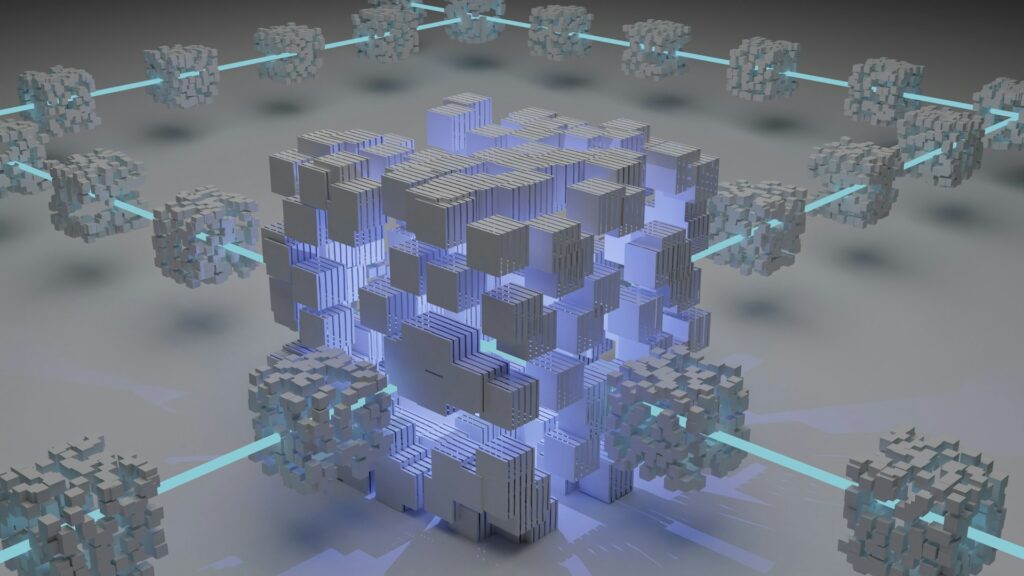Blockchain and IoT: Transparent Utility Subsidy Management for Low-Income Homes
Funds from government utility subsidies help low-income families pay less for electricity and water supply and gas services.
The standard subsidy management approaches experience multiple problems with efficiency issues and fraud and lack of transparency.
Basic utility subsidies can be managed securely through blockchain integrated with Internet of Things (IoT) which allows automatic distribution of funds to correct beneficiaries and stops any fraudulent use.
The article demonstrates how blockchain technology combined with IoT capabilities will transform utility subsidy management designed for low-income families through efficient accountability and fair distribution methods.
Challenges in Traditional Utility Subsidy Management
Multiple problems exist in current utility subsidy programs receiving good intentions despite these benefits.
a) Fraud and Misuse
- Weak tracking systems enable diversion of subsidies along with misuse and manipulation of the funds.
- Middlemen and unauthorized user groups can take advantage of low-income household welfare benefits which were meant for this population.
b) Lack of Transparency
- People who reside in these areas lack insights into allocation methods of subsidies and the reasons behind receiving specific amounts.
- The government finds it difficult to confirm how subsidy funds are used for their designated functions.
c) Inefficient Distribution
- The time it takes to verify subsidy allocations is prolonged because of using manual methods.
- Using outdated databases and paper records along with them raises administrative expenses.
d) Difficulty in Monitoring Consumption
- Homeowners who receive support programs normally do not access real-time information about their electricity or water consumption.
- The service providers lack the means to trace excessive or improper usage.
We can develop an integrated system through the cooperation of blockchain and IoT networks to both fix the current supply chain problems and track subsidy distribution effectively.
How Blockchain and IoT Improve Subsidy Management
Blockchain: The Backbone of Transparency
The decentralized transaction system uses blockchain technology to establish tamper-proof records for secure transparent transactions.
The following approach enhances subsidy management operations.
- The immutability of records through blockchain prevents both fraud and improper use of subsidies.
- The direct disbursement system uses smart contracts to distribute subsidies directly to households without requiring outside organization participation.
- The government together with its agencies achieves instant transaction checkups which maintains equal subsidy distribution.
IoT: Smart Tracking of Utility Consumption
The real-time utility usage monitoring of IoT devices encompasses smart meters and connected appliances together with water sensors. Benefits include:
- The system uses smart meters to monitor utility usage in real time which enables subsidies to match the actual consumption amounts.
- IoT devices will trigger notifications or regulate supply levels when any household surpasses its stated programs and subsidy restrictions.
- Utility providers use analyzed data to enhance the distribution efficiency of their energy and water systems.
How Blockchain and IoT Work Together
- Smart meters (IoT) track household utility consumption in real time.
- The blockchain ledger securely stores the data which protects it against any attempts to tamper or manipulate it.
- Smart contracts use verified usage data to automatically distribute subsidies through an automatic system which ensures proper and efficient subsidy distribution.
- Residents can view their consumption data via smartphone applications for improved transparency together with enhanced accountability.
By completing the entire automation process the distribution of subsidies becomes fair and secure with no wait times.

Benefits of Blockchain + IoT for Utility Subsidy Management
a) Eliminating Fraud and Corruption
Through its blockchain system the funds remain immutable and IoT devices perform real-time checks of consumption.
b) Faster and More Efficient Subsidy Distribution
The automated system of smart contracts processes subsidy payments at once without human involvement to decrease administrative delays.
c) Enhanced Transparency for Households
Subsidy recipients see an overview of their subsidy amounts together with their energy/water intake data which fuels responsible resource management.
d) Cost Savings for Governments and Utility Providers
Authorities can cut their administrative expenses by thousands through automatic verification and lower subsidy fraud.
e) Encouraging Sustainable Usage
Data about immediate consumption usage allows residents to use resources better while minimizing waste through energy-efficient approaches.
Challenges and Solutions for Implementing Blockchain + IoT in Subsidy Management
- Public-private sector co-operation serves as a solution to reduce high initial setup costs.
- The system becomes more accessible through mobile apps which users and communities can learn from training programs.
- Better connection to operate IoT devices successfully can be enabled through 5G and satellite-based networks in remote areas.
- The system protects resident data through encryption protocols and blockchain identification systems.
- Through appropriate policies combined with investments and community participation these challenges will efficiently help build an equitable subsidy framework.
Conclusion
Utility subsidy management through blockchain integration with Internet-of-Things technology delivers transformative support solutions which maintain equity and transparency in subsidizing low-income households.
Through automated transactions and fraud prevention and real-time tracking capabilities Blockchain technology will revolutionize governmental subsidy management alongside service provider operations.
Smart subsidy systems implemented with blockchain and IoT technologies will form the foundation of an open and equitable future for low-income communities.
Frequently Asked Questions (FAQs)
1. How does blockchain prevent subsidy fraud?
The secure and permanent Block chain record system prevents any modification or manipulation of subsidy distribution data.
2. What IoT hardware components exist for subsidy management operations?
Energy monitors along with smart meters and connected water sensors actively monitor utility consumption rates to verify precise subsidy distribution.
3. Can residents track their own utility usage?
Utility customers can check their usage statistics in mobile applications which provide tools for both usage observation and usage adjustment.
4. Which advantages does block chain integration with IoT technology provide to government institutions?
Through this system the costs of management decrease while the prevention of fraud increases and subsidies reach the intended recipient households at a faster speed.

